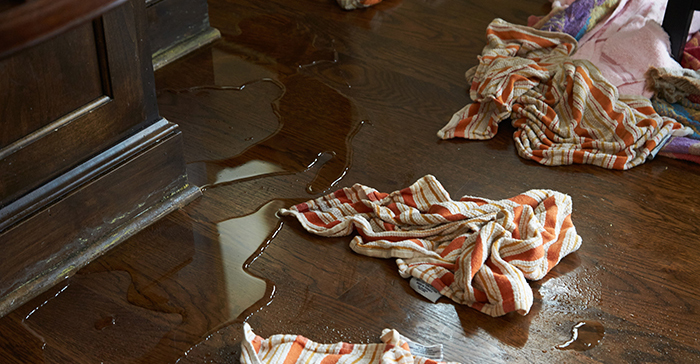Are you currently in search of related information concerning Common Causes of Water Damage in a Bathroom?

The shower room is very susceptible for moist accumulation and also possible water damage due to the constant use water in it. This post provides simple inspection methods to assist spotting water damages threats.
The regular use of water in the washroom makes it exceptionally susceptible for wet build-up and possible water damages. By examining it routinely, you can lower water associated damages.
The adhering to set of inspections is very easy to carry out and ought to be done once in every 3 months in order to keep your bathroom healthy and to stop prospective water damages triggered by the bathtub, the shower, pipeline joints as well as plumbing, sinks, cabinets, and the commode
Do not overlook performing these assessments and be detailed while doing them. Remember that these basic inspections can conserve you a lot of cash by providing very early indications for water damage
Sinks as well as Cabinets
Sinks and cupboards are exposed to wetness and also humidity day-to-day as well as are usually overlooked. Check routinely under the sink and also on the countertop above it. Fix any kind of drip in the trap as it might suggest drain troubles. Take a look around the sink, slow-moving draining pipes may show an obstructed drain. Change sink seals if they are split or loose.
Tub and Shower
The shower as well as bath tub need unique focus and maintenance. Examine the tiles as well as change if cracked. See to it that there is no missing cement in between the tiles. Examine and also change cracked caulking at joints where the walls fulfill the flooring or the bathtub. Blocked drains pipes and also pipelines troubles will avoid the bath tub from drying out and may suggest severe troubles beneath the tub. Talk to a specialist immediately to stop structural damage. Take note of discolorations or soft areas around the tub wall surfaces as they might show an internal leak.
Plumbing
Signs for water damage are tough to detect because many pipes are set up inside the wall surfaces.
Pay unique focus to floor covering and also wall surfaces moisture and stains as they may indicate an unnoticeable plumbing issue. Inspect moisture levels in adjoining rooms as well.
The Toilet
The toilet is a vulnerable water junction. Check the water lines and search for leaks around the toilet seat, in the hose, and under the water tank. If you find any kind of indicators of moisture on the floor around the toilet, check for leakages in the toilet edge and also container seals.
Know that hanging bathroom dish deodorants raises the chances for clogs.
Water Damage Signs In The Bathroom To Avoid Cleanup
Musty smell
This is one of the easiest signs to catch because musty smells are so odorous. The damp, earthy, moldy smell should be a big red flag. The smell will develop when moisture gets trapped in surfaces, and begins to facilitate mold growth. Leaking pipes under cabinets, inside walls, and behind shower fixtures will cause moisture to stay trapped and not dry, which will lead to mold growth and spread. As soon as you notice any musty smells in your bathroom, have it checked for hidden water damage and cleanup signs.
Visible mold
If the smell isn’t there to give it away, sometimes you will actually see mold growth. Finding mold in your bathroom is a serious problem, because mold is very harmful to your health. By the time mold growth is visible, it also means that water damage has already occurred and been present for some time. The only way the mold problem can be resolved is to find the source of the moisture and get it stopped. To safely and adequately remove mold, you need to have professionals handle the remediation. Do not waste any time in getting mold problems addressed, fixed, and sanitized so that you can protect you and your family from the many respiratory symptoms caused by mold exposure.
Damaged floors
Bathroom floors should be able to withstand some exposure to water while still remaining in good condition. However, when excess exposure or water leaks occur, they will begin to damage even the most water-resistant flooring. If you notice any cracking, bubbling, staining, or warping on your bathroom floors, there is probably a water leak somewhere causing the distortion. If you notice areas of the floor have become softer, or even have a spongy feeling, there is probably damage to the subfloor. Subflooring is typically made up of plywood. When plywood is exposed to water or moisture, it will absorb it. Once it has become saturated, the weight of the excess water will cause the wood to swell and soften. Check the floors in your bathroom frequently to catch any of these sings before they lead to damaged subflooring.
Changes on walls
When water leaks behind walls, it will cause changes in the drywall. Peeling plaster, blistering paint, and soggy wallpaper are all good indicators that excess water is building up behind the wall. Water leaking behind drywall will cause it to swell and be soft to the tough. If you start to notice gaps along the trim of your walls, or where tile meets the wall, it could also be a strong indicator that there is a leak behind the wall. Any changes, distortion, or damage on the walls should be evaluated as soon as you notice it to prevent further water damage and cleanup.

I have been very curious about Preventing Water Damage in the Bathroom and I hope you appreciated my blog post. Liked our content? Please share it. Let others discover it. Thanks for your time invested reading it.
Request Service